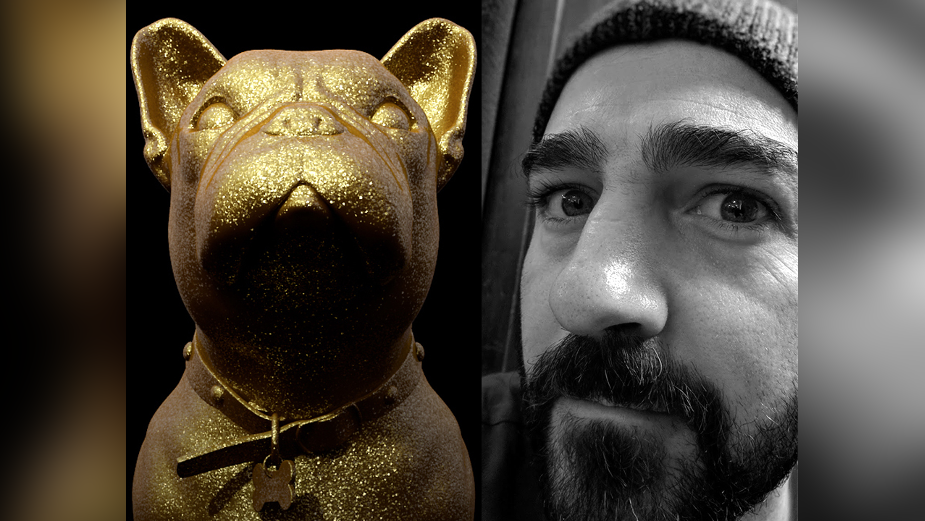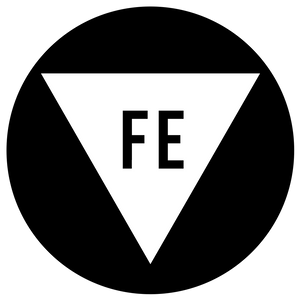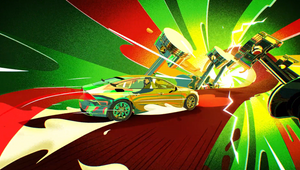
The Directors: Polynoid

Polynoid are revered globally as unique makers of visceral CG films. They stated their creative intentions with their groundbreaking short film ‘Loom’, which has since been hailed as a seminal moment in CG filmmaking. Polynoid have a truly unique filmic language and design sensibility, using stylised and photo-real 3D to startling effect. They are storytellers in the truest sense, applying to their work a stunning audio and visual language. A few lucky brands have attached Polynoid's signature style to their advertising messages, attracted to the purity and clarity of Polynoid’s highly original short films.
Based out of their Berlin studio, Polynoid are some of the most talented, culturally relevant, highly organised, coolest and downright nice guys you could meet.
- Name: Polynoid / Jan Bitzer
- Location: Berlin
- Repped by/in: Friends Electric/US&UK, Unlisted/China, Passion Pictures/Australia, Woodblock/Germany
- Awards (Selection): Best in Show - Siggraph, Golden Nica - Ars Electronica, Main Title Design Nomination - Primetime Emmy Awards, Winner - VES Awards
Q> What elements of a script sets one apart from the other and what sort of scripts get you excited to shoot them?
Jan> Since we are 99% in an animation world, and mainly work in a commercial context, there aren’t too many traditional script treatments in circulation. We mostly deal with creative briefings that vary in terms of detail. It could be as simple as a visual reference and the task is to ‘come up with something’ or it’s a meticulous storyboard. Generally, the briefings that excite us most are the ones with the biggest wiggle room to put our own stamp on and the ones that are based on something that we like visually.
Q> How do you approach creating a treatment for a spot?
Jan> It varies…
Totally depends on the volume of work that has to be done for the treatment and the people available for help. We usually start with a collection of references, images, or simply anything that gets us on a path towards a round concept.
This can be a collaborative process with multiple creatives working on it at the same time. In that case, sometimes we even develop multiple concepts to a given brief and either submit them all or have a little internal pitch first.
Over the years, in between the Polynoids, we created this workflow of chaos that then results in something tight at the end. It’s good to keep things fluffy and random at the beginning to keep your options open. The times where we have a strong vision from day one are more on the rare side. But that’s just how the creative process works in a world of fast turnarounds and overdose of visual stimuli.
Lately we’ve been doing more and more fully fleshed-out test sequences that get quite close to the final thing. You gotta stay on your toes to stick out of the competition.
Q> If the script is for a brand that you're not familiar with/ don’t have a big affinity with or a market you're new to, how important is it for you to do research and understand that strategic and contextual side of the ad? If it’s important to you, how do you do it?
Jan> In our position as creatives it is sometimes better to keep your distance to the brand instead of fully understanding the market, positioning and what not. Since we mainly work with agencies, they are already covering that aspect and raise their hand if we go too far. I think it’s mostly an advantage to not get too involved with the research of products so we don’t limit ourselves or set ourselves unnecessary boundaries when it comes to the films we make. So overall I’d say, the more we can stay out of it, the better for the media we create. But of course we can’t always have it that way and so we do get involved into the specifics quite a lot, too.
Q> For you, what is the most important working relationship for a director to have with another person in making an ad? And why?
Jan> I’d say a good producer who’s got your back. Of course there’s a ton of other people that are equally essential. But since we are always part of a big chain of client, agency, production company, us and then sub vendors...it’s always good to have a capable producer.
Q> What type of work are you most passionate about - is there a particular genre or subject matter or style you are most drawn to?
Jan> Honest question - honest answer. The work we are most passionate about is of course the one we do for our own projects.
Q> What misconception about you or your work do you most often encounter and why is it wrong?
Jan> That’s usually related to the relationship of budget and content. Animation is a nice thing, but it’s also labour intensive. Lots of people involved, and all have their own bills to pay. And then of course we want to be compensated in a reasonable manner for the creative service we provide.
In live action shoots, directors have a creative fee, production designers get paid for their output but animation studios are often only paid for the production labour, not the creative work we float upfront.
Creative ideas and direction is sometimes not expected to be compensated since it is part of a ‘package’. As we are probably not the only ones in our field of work, we encounter situations quite regularly where there are high expectations but no financial resources to back them up.
Q> Have you ever worked with a cost consultant and if so how have your experiences been?
Jan> Not externally, no. That’s something that might still happen at some point.
Q> What’s the craziest problem you’ve come across in the course of a production – and how did you solve it?
Jan> That’s a tough question to answer since over the years we collected quite a lot of candidates. I’d put it this way, the things that can go sideways during a running production can be quite manifold. It ranges from difficult clients to something as simple as a power outage at the perfectly wrong time. I’d say that everything possible already happened to us but that’s probably a wrong assumption (knock on wood).
In the end, we always found a way to deliver quality and we are proud to say that we never ‘not finished’ a job in time.
Q> How do you strike the balance between being open/collaborative with the agency and brand client while also protecting the idea?
Jan> One thing that we as creatives had to learn the hard way over the years is that you have to find your own, personal balance of how much you want to get attached to an idea that you love. You have to find that Zen-like space where on the one hand you fight for your creative idea, you argue, you use flattery, you play good cop - bad cop and so on. But once you see the fight is over, you have to be able to let go of things and play along with a smile and without anything breaking inside of you.
Creative ideas are always emotionally loaded and this is part of our fuel. So in the early years, we got our hearts broken a lot when things didn’t go our way. Now we learned, there is always a give and take. This is not our own work, we provide our talent to somebody else as a service. It’s diplomacy and in the end, everybody should be happy.
Q> What are your thoughts on opening up the production world to a more diverse pool of talent? Are you open to mentoring and apprenticeships on set?
Jan> We are and we do. At least we are starting these kinds of things lately. For a long time we had to first figure out our own place in the creative world but now that we have some miles under the hood we are so ready to pass on what we learned to a new generation.
What we are particularly interested in is strengthening the creative pool of female artists and art directors. Unfortunately the pool of talent is still very male dominated and we’d love to see that changed in the future and we want to do our part in a shift towards a gender-balanced pool of artists.
Sadly, the Polynoids are themselves part of the problem since we are a bunch of dudes. It would be great to see more animation filmmaker collectives emerge successfully, that are girl dominated. The boys are just so last millennium.
Q> How do you feel the pandemic is going to influence the way you work into the longer term? Have you picked up new habits that you feel will stick around for a long time?
Jan> I’d say a careful ‘yes’.
As everybody will probably tell you, remote work is the cool new thing.
Although we still have a strong in-studio crew happening, it became more flexible and people are taking advantage of mixing it up. But compared to other shops and companies who basically gave up their real estate and now function fully in the depths of the internet, we still have a solid studio presence.
Q> Your work is now presented in so many different formats - to what extent do you keep each in mind while you're working (and, equally, to what degree is it possible to do so)?
Jan> We try to find the biggest common denominator and produce our films on that basis.
Usually this means the longest format which then can be cut down to the smallest GIF, as well as the ‘squarest’ framing which can be cropped to everything from Instagram to 9:16 to the good ol’ HD.
Q> What’s your relationship with new technology and, if at all, how do you incorporate future-facing tech into your work?
Jan> Bigger shops have usually better resources to develop and incorporate new tech into their pipelines. As a more ‘boutique-sized’ studio, it is a bit harder for us and takes longer since we basically have to run the daily business and do our homework on VR, AR and such after we’re done with our ‘chores’.
But a big yes, we do and we are. Currently starting some productions in Unreal and always open and eager to try out new things.
Q> Which pieces of work do you feel really show off what you do best – and why?
Jan> Here’s a selection of different pieces that go well as a cross section.
‘Loom’ was kind of the starting point for us as it was our film school graduation project and solidified Polynoid and gave it a unique visual and storytelling language.
‘Halo 4: Forward Unto Dawn - Titles’ I think this one was a good example of our abilities to dive into a topic completely, get familiar with it and come up with a concept that tells a bigger story with subtlety. This sequence was a lot of fun to conceptualize and it still passes the test of time. Also, it got us an Emmy nomination. We lost, but it was still a great recognition.
‘Swatch - Irony X Lite’ was one of our few ventures into the world of live action shoots and since none of us really has any experience as a live action director, we basically filmed the whole shoot documentary style and stitched it together. Ignorance can be bliss.
Islands of Glass was a music video for Rob Clouth. A labour of love project. I like to play with the concept of realism, not necessarily in a photorealistic kind of way, but more giving things imperfections, emulating mistakes, time restrictions, bad equipment. Life stuff.










